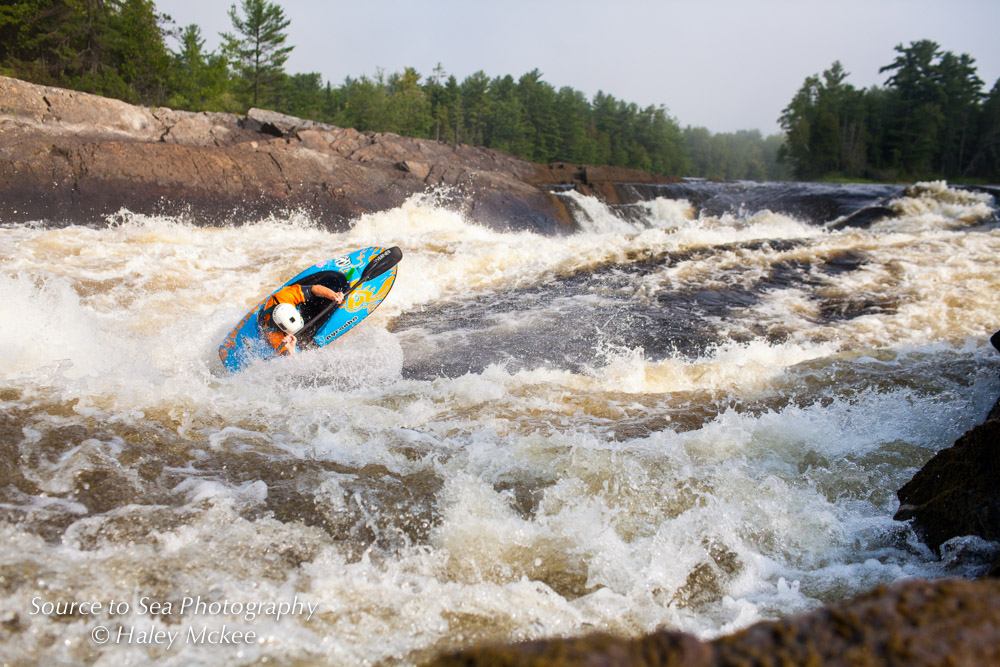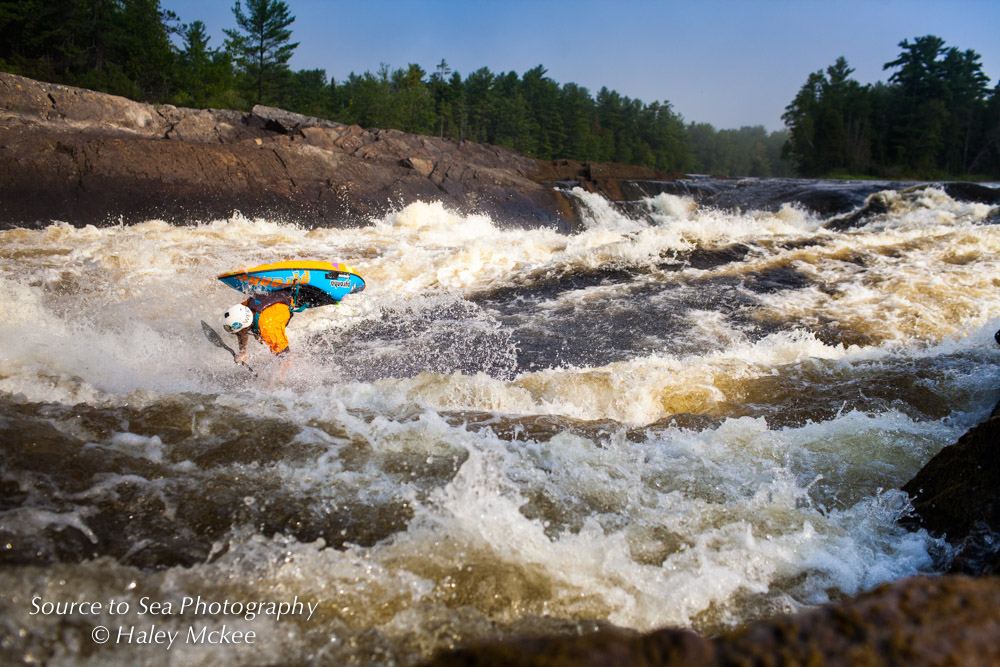After the front loop the Airscrew is one of the most sought after tricks out there, and for good reason, they look *sick! (*sick = really good)
The definition of the Airscrew is ‘a 360 degree aerial barrel roll on the horizontal axis of the boat’. To do this trick you are going to need a good sized wave and a solid back deck roll; having some experience edging boats on a wave and being able to perform easier wave tricks such as blunts will also help a lot. There are various techniques you can use when doing an airscrew but the one I am going to cover is the one I use most often and in my opinion the easiest to learn as it is based almost entirely off the backdeck roll and is an easy drill to practice in flat water.
Step 1. Setup
Get to the top of the wave and spot your take off point. On most waves this will be on the first bounce you can take and as far up the wave as possible.
Step 2. Takeoff
This is where being familiar with edging on a wave and performing tricks like blunts will make it far easier for you. But for those that don’t know, you are going to get some speed down the wave and aggressively stomp your feet and pull up hard with your knees. The higher the nose of your kayak gets on the takeoff the more air you will have to do your trick, Generally I aim for the bow of the boat to be above my head. As with almost every wave trick in the book you are going to edge the opposite way of the direction that you are going to throw the trick. A principle rule when learning the Airscrew is that you have to take off straight to land straight.

Step 3. Initiate
Now your kayak will begin getting airborne and you will be about to take your first step toward throwing your airscrew. The key thing on the initiation is to get your head under your boat as soon as possible I like to look at my back hand and and follow it throughout the movement (see photo). One of the secrets to getting a good Airscrew on a small waves is flicking off the water with your back paddle this helps to both begin your rotation and speed it up.

Step 4. Inverted
Congratulations you will now be both in the air and fully inverted on the wave! You are now at the midway point through your Airscrew and even if you don’t land it you should still be able to get a great photo of you looking like you can Airscrew (winning) (sort of). At this point you will now reach across with your front hand and grab hard on the water with it. This is the make or break point on most aircrews and generally speaking the quicker you reach across and the harder you pull the better your Airscrew will be.
Step 5. Landing
Boom! You should be landing your Airscrew and continue surfing on the wave almost in the same spot that you just took off from you now face a tough decision; keep straight faced and act like throwing an Airscrew is no big deal or continue to step 6.

Step 6. Celebrate
You just landed one of the most visually impressive tricks in kayaking. Sick work! Make sure to quickly and and elaborately perform a victory dance to convey your emotions of pure stoke to your friends in the eddy.
Things to Consider
Crashing really hard and in a bad position on this trick can put your shoulders at risk and doing a couple of strengthening exercises along can help to reduce the risk of a shoulder injury substantially. Wearing a slimline buoyancy aid will make a huge difference when doing this trick or any type of freestyle kayaking. There are lots of good ones to choose from but my favourite by far is the Palm Alpha.
I hope this guide helps and I look forward to seeing you all stomp Airscrews!
See you on the water, Bren Orton